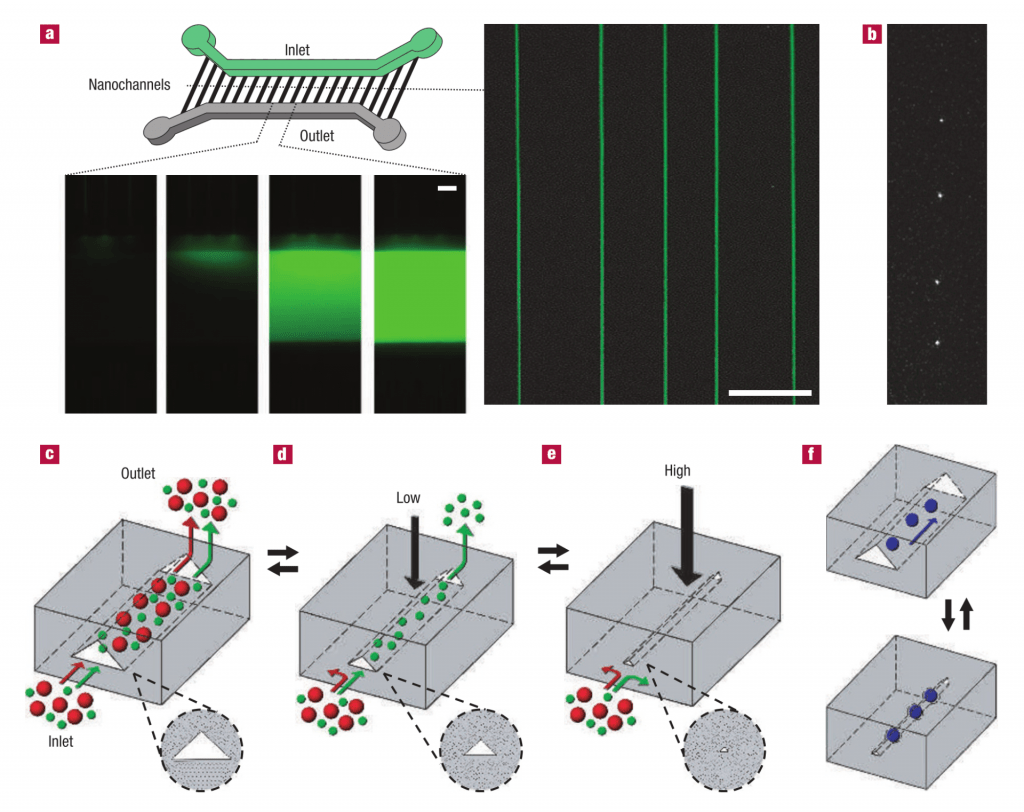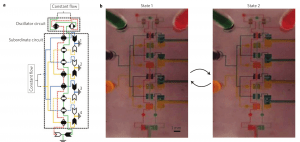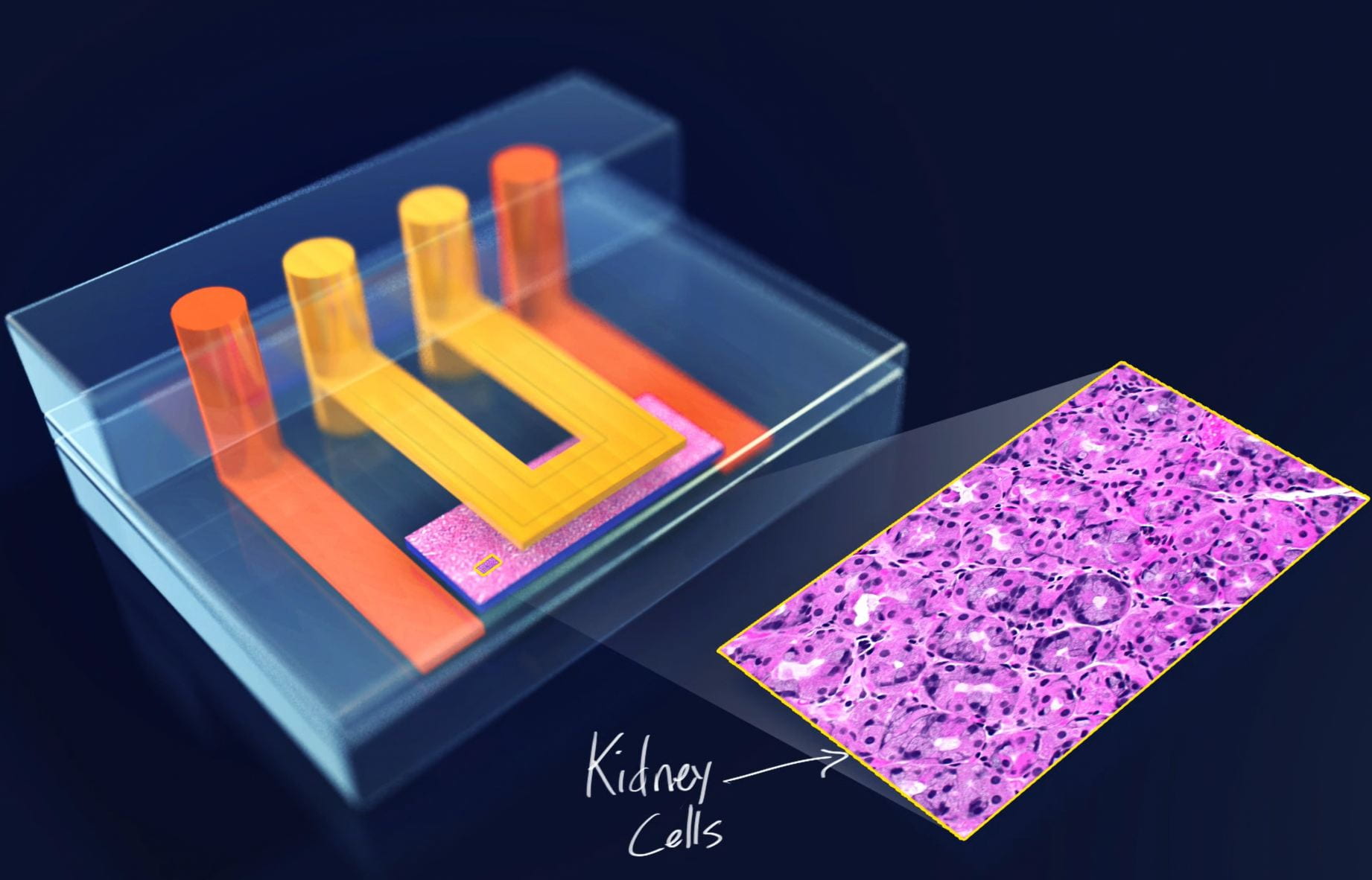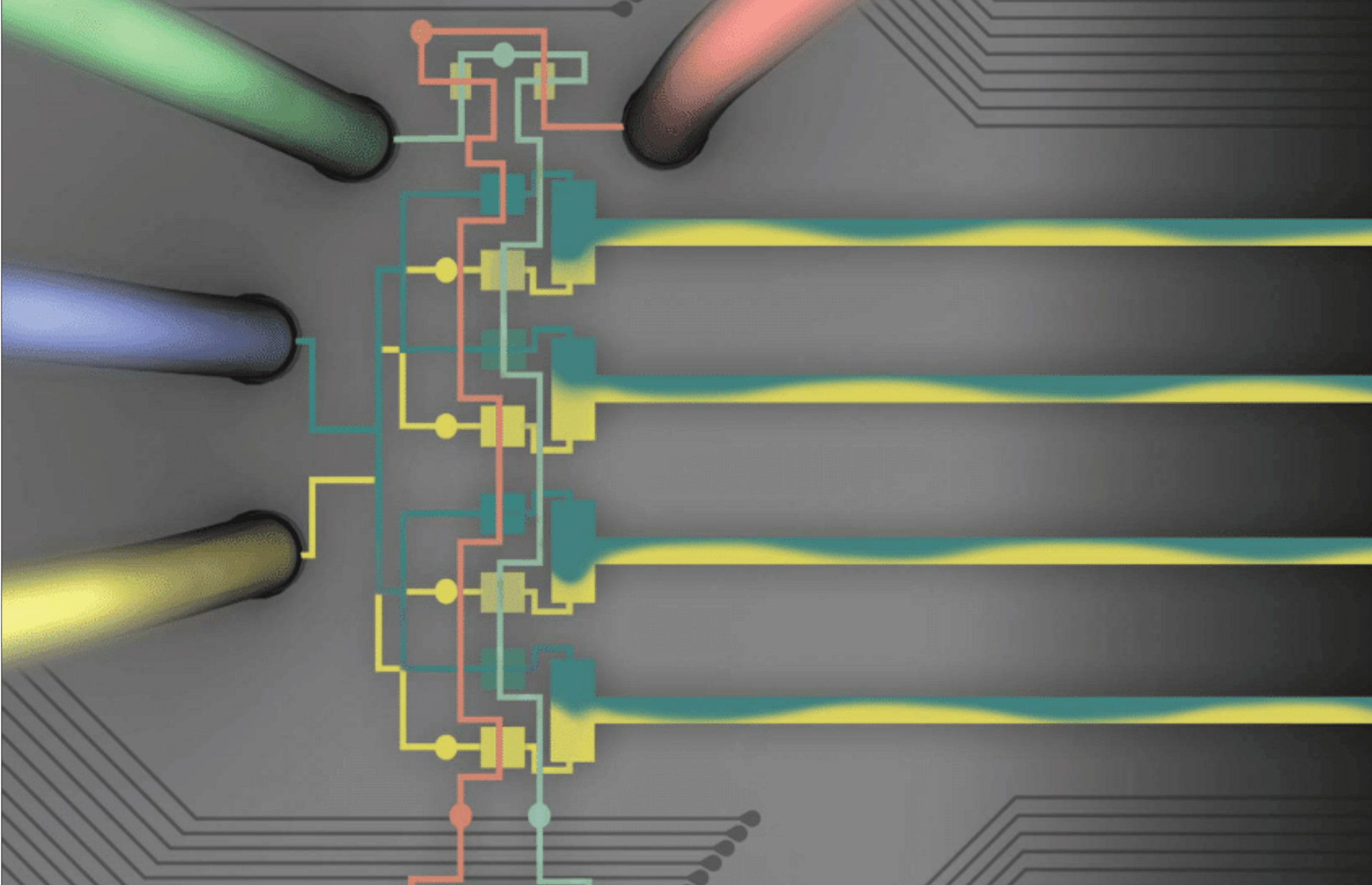BIOPROCESSING AND MICRO/NANOFABRICATION
We use microfluidics and other platforms to engineer tools that can manipulate cells, proteins and DNA at the nano-and micro-scale.
Currently, we’re focusing on the following areas:
Super-resolution Visualization of Histone Modifications on Individual Chromatin Fibers
 Our lab has developed a unique method that uses crack propagation in poly(dimethyl siloxane) to generate nanochannels of controlled size and length that can be opened and closed by stretching. We can load these channels with biomolecules, and have used these channels to unfold and label DNA fibers. Particularly, we aim to linearize, immobilize and perform super-resolution imaging of native chromatin fibers using a platform of elastomeric nanochannels. The immediate biological goal is to track the transmission of histones during DNA replication and the redistribution of histone modifications during transcription activation, revealing how epigenetic information is coordinated on individual chromatin fibers.
Our lab has developed a unique method that uses crack propagation in poly(dimethyl siloxane) to generate nanochannels of controlled size and length that can be opened and closed by stretching. We can load these channels with biomolecules, and have used these channels to unfold and label DNA fibers. Particularly, we aim to linearize, immobilize and perform super-resolution imaging of native chromatin fibers using a platform of elastomeric nanochannels. The immediate biological goal is to track the transmission of histones during DNA replication and the redistribution of histone modifications during transcription activation, revealing how epigenetic information is coordinated on individual chromatin fibers.
Lab members: Ji Hoon Lee
Publications: Huh 2007; Matsukota 2012; Kim 2015; Han 2016
Microfluidic Logic Circuits
 Microfluidics logic is a new field targeting the development of device-embedded, non-electrical, flow-controlled microsystems. Function-oriented microfluidic components such as normally-closed valves and microfluidic diodes can coordinate to provide flow switching and timing functions, much like that of a 555-timer in electronic circuits. This flow-powered fluidic gating scheme brings the autonomous signal processing ability of microelectronic circuits to microfluidics.
Microfluidics logic is a new field targeting the development of device-embedded, non-electrical, flow-controlled microsystems. Function-oriented microfluidic components such as normally-closed valves and microfluidic diodes can coordinate to provide flow switching and timing functions, much like that of a 555-timer in electronic circuits. This flow-powered fluidic gating scheme brings the autonomous signal processing ability of microelectronic circuits to microfluidics.
Microfluidics, however, also has additional diversity in current information because it can also incorporate multiple distinct chemical or particulate species and can leverage chemical, electrical, and physical interactions to help control fluid flow. Our lab has the ability to fabricate self-regulating microfluidic devices and model fluid flow based on pressure, channel compliance, and contact surface area.
Lab Members: Vishwa Vasani
Publications: Lesher-Pérez SC 2018; Kim 2015; Mosadegh 2014; Mosadegh 2010 Nat. Phys.
Microphysiological Systems
Combining physical forces, engineered materials, and multiple cell types to recreate the tissue microenvironment from the bottom up.
Bioassays
Invention and improvement of protein- and cell-based assays that quantify cellular responses to drugs and organotypic stimuli.
Bioprocessing and micro/nanofabrication
Separations and spatial manipulation of biological material such as cells, proteins, nucleic acids, and bacteria.




